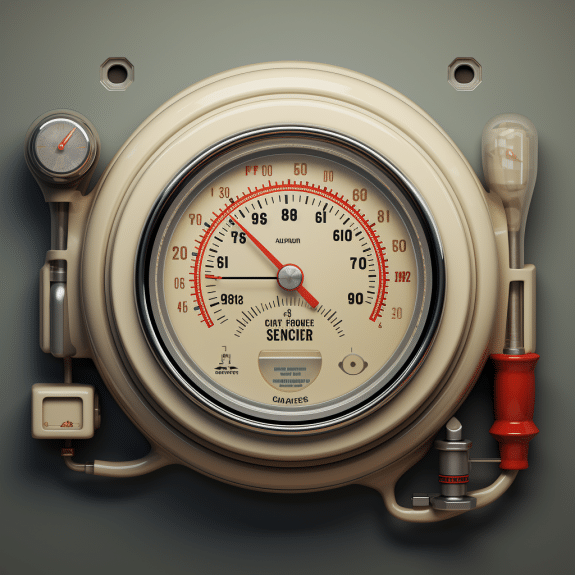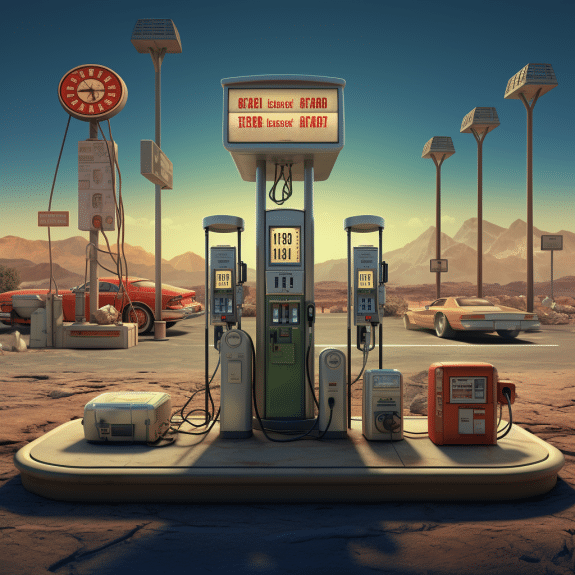
Gas Mileage Optimization: Strategies for Efficiency
Gas Mileage Optimization is a key factor when considering your car’s performance and cost. By improving it, you can save money and help the environment. Here are tips to better fuel efficiency.
- Check your tire pressure. Under-inflated tires create resistance, which uses more fuel. Regularly check your pressure and inflate to the level specified in your manual.
- Reduce weight in your car. The heavier your car, the more energy it needs. Remove items from the trunk and backseat to lighten the load and get more out of each tank of gas.
- Drive steadily. Rapid acceleration and braking use more fuel. Avoid aggressive driving, like speeding, to get the most from your car.
- Hybrids are a great option. Combining an internal combustion engine with an electric motor, hybrids have improved gas mileage. They offer excellent performance and are eco-friendly.
By using these techniques, you can maximize gas mileage and save money. Small changes can make a large difference in fuel efficiency.
Understanding gas mileage and its importance
Fuel efficiency is a must for any vehicle. It helps you save money and also reduces carbon emissions. Let’s explore the importance of understanding gas mileage and how to improve it.
Gas mileage is the distance a car can travel on one unit of fuel, typically measured in miles per gallon (mpg). It has a major influence on our finances and the environment. Knowing this helps us drive smarter and keep our wallets and planet healthier.
Efficient driving techniques are key to better gas mileage. Avoiding sudden acceleration or deceleration makes the engine run more efficiently. Keeping a steady speed and preventing unnecessary idling also help.
Proper vehicle maintenance is important too. Check tire pressure regularly to ensure it matches the manufacturer’s specs. Underinflated tires mean more rolling resistance and less fuel efficiency. Regular tune-ups like changing air filters, spark plugs, and oil improve the car’s performance and gas mileage.
Reducing unnecessary weight from the vehicle has a direct effect on its fuel consumption. Carrying too much baggage adds load and decreases efficiency. Cleaning out your trunk or removing roof racks when not in use can reduce the load and enhance gas mileage.
Cruise control on long highway drives also improves fuel efficiency. This feature keeps a constant speed without acceleration or deceleration deviations caused by human error. This reduces fuel wastage due to fluctuations in speed during long drives.
Understanding gas mileage helps us make informed decisions that are good for our bank accounts and the environment. Smart driving and regular vehicle maintenance can save us money and reduce carbon emissions. Let’s be responsible and make a greener future for us and the generations to come.
Regular maintenance and servicing
Mark, the diligent driver from California, knew how important it is to pay attention to maintenance. He kept his tires properly inflated to reduce rolling resistance. And changed his air filter regularly to optimize fuel combustion. He also used high-quality gasoline and additives to keep his fuel system clean. On top of all that, he got regular oil changes to keep his engine running smoothly.
Mark also knew that other details mattered too. He checked and replaced worn-out spark plugs, timing belts, and oxygen sensors. All these small steps had a significant impact on his car’s performance and gas mileage.
And the result? A smoother driving experience and improved gas mileage! All because Mark prioritized regular servicing.
Efficient driving techniques
A daring duo took a daring journey ‘cross the land – they wanted to explore without spending a fortune on fuel!
To save money and be eco-friendly, they practiced efficient driving techniques such as:
- Smooth acceleration
- Maintaining a steady speed
- Avoiding excessive idling
Plus, they checked tire pressure regularly, used higher gears for lower speeds, and removed any extra weight from their vehicle.
The result? A successful, money-saving, eco-friendly road trip!
So why not give these efficient driving techniques a go next time you hit the open road?
Reducing vehicle weight
To maximize your car’s fuel efficiency, follow these steps:
- Opt for lightweight parts, like carbon fiber or aluminum.
- Regularly clean out the car and remove unneeded items.
- Stick to essential features – don’t add excessive weight.
- Adhere to maintenance schedules – properly inflated tires and a well-maintained engine make a difference.
- Streamline exterior design – choose aerodynamic shapes and features to reduce drag.
- Use lighter alloy or carbon fiber wheels – they reduce rotational inertia.
- Optimize engine tuning – keep up with tune-ups and use recommended motor oil.
- Plan efficient routes – utilize GPS navigation to avoid traffic.
These steps will help reduce car weight, improve gas mileage, and save money while having a lower carbon footprint.
Maximizing aerodynamics
Maximizing aerodynamics for cars is not a new concept. It began in the 1920s when engineers studied methods to reduce drag. Paul Jaray, an Austrian engineer, revolutionized aerodynamics and influenced car makers worldwide.
To achieve this, try these strategies:
- Streamlined Shape: Design your car with a sleek and aerodynamic shape. Avoid unnecessary racks or spoilers that disrupt airflow.
- Smooth Surfaces: Keep your car’s exterior clean and free from dirt, dust, etc.
- Proper Tire Inflation: Regularly check the tire pressure. Underinflated tires increase rolling resistance and reduce fuel economy.
- Close Windows: When driving at high speeds, keep windows closed. This helps maintain a streamlined air flow.
- Remove Excess Weight: Unnecessary cargo adds extra weight and increases fuel consumption. Take out non-essential items to lighten the load.
By following these principles, you can optimize efficiency and get more miles per gallon, saving money and the environment in the process.
Enhancing fuel efficiency through technology
Electric and Hybrid Cars have revolutionized the automotive industry, using battery-powered motors to reduce fuel consumption. Engine Start-Stop Technology shuts off the engine when the vehicle is still, enhancing fuel efficiency. Aerodynamic Design has automakers focusing on reducing drag and increasing fuel efficiency.
Tire Pressure Monitoring Systems also play a role in improving fuel economy. Ford’s EcoBoost engine lineup, introduced in 2009, combines direct injection with turbocharging to deliver power while increasing gas mileage.
These tech advances let drivers make a real, fuel-efficient impact. Upgrade your car’s tech and know you’re doing good for your wallet and the environment.
Conclusion
We’ve finished exploring how to boost your car’s gas mileage. Bear in mind that small adjustments can make a huge difference. By driving in a fuel-saving way and looking after your vehicle, you can up its fuel efficiency and save money at the pump.
One key part of bettering gas mileage is driving in an eco-friendly way. This involves not accelerating or braking harshly, keeping a steady speed, and cutting down on idling. These habits can help you use less fuel and reduce damage to your engine.
Moreover, proper maintenance of your ride is important for optimal gas mileage. Check tire pressure regularly, get regular tune-ups, use the recommended grade of motor oil, and change air filters as needed. A well-maintained car runs more effectively and uses less fuel.
Let me tell you about Tom. He was a dedicated driver who used numerous strategies to increase his car’s gas mileage. Tom combined his short trips into one longer one when possible. This cut back his total mileage and let the engine reach its optimal temperature quicker. He also took out unnecessary weight from his vehicle as extra weight increases fuel consumption.
In addition, Tom joined a carpooling group for his daily commute. This not only cut down his personal carbon footprint but saved him money on gas too. Also, he bought quality tires with low rolling resistance. This gave him better traction and reduced energy lost due to friction.
By applying these strategies into his routine, Tom saw a drastic improvement in his car’s gas mileage over time. His efforts not only helped him financially but had a positive effect on the environment.
Frequently Asked Questions
Q: What can I do to improve my Gas Mileage Optimization?
A: There are several steps you can take to increase your car’s fuel efficiency. Some tips include driving more smoothly, maintaining proper tire pressure, reducing weight in the vehicle, avoiding excessive idling, and using the correct motor oil Gas Mileage Optimization.
Q: Is it true that driving at a slower speed conserves more fuel?
A: Yes, driving at a slower speed can help improve your car’s gas mileage. Higher speeds lead to increased aerodynamic drag, reducing fuel efficiency. Slowing down and maintaining a steady speed can save you fuel and money.
Q: How important is regular car maintenance for improving fuel efficiency?
A: Regular car maintenance is crucial for enhancing fuel efficiency. Keeping up with tasks like oil changes, air filter replacement, and spark plug inspection ensures your car is running optimally and can improve gas mileage as a result.
Q: Can using cruise control help save fuel?
A: Yes, using cruise control on the highways can help save fuel. It helps maintain a consistent speed, preventing unnecessary acceleration and deceleration that can waste fuel. However, be cautious when using cruise control on hilly terrain or in heavy traffic.
Q: Are there any benefits to carpooling or combining trips to improve Gas Mileage Optimization?
A: Absolutely! Carpooling or combining multiple trips into one can significantly enhance your car’s gas mileage. Fewer vehicles on the road mean less traffic congestion, smoother driving conditions, and less Gas Mileage Optimization for everyone involved.
Q: What role does air conditioning play in affecting fuel efficiency?
A: Air conditioning puts an additional load on the engine, increasing fuel consumption. To maximize your car’s gas mileage, use the air conditioning sparingly and try utilizing the flow-through ventilation system or opening windows when possible.
